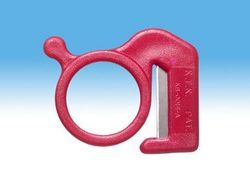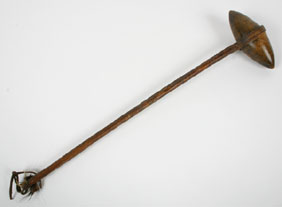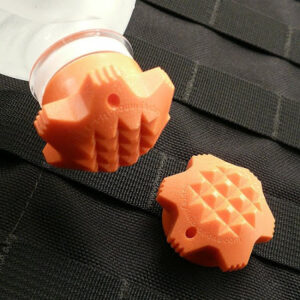In a previous post (Aug 18th) I mentioned William Cassidy’s book "The Complete Book of Knife Fighting" in connection with the rather improbable “feint low and he will go low” sequence. In fairness I thought I should deal with this book in greater depth, given that it is rather well known and claims to be a complete and definitive guide to knife fighting.
One of the good points about this book is that establishes a historical context for modern knife fighting. Cassidy attributes this to four individuals: WE Fairbairn, Rex Applegate, ADJ Biddle and John Styers. He does mention that Fairbairn’s best known works have very little knife-fighting. In fact they contain information on knife use but no knife against knife-fighting. Fairbairn was an obvious influence on Applegate, while Styers was a student of Biddle. Biddle himself was influenced by Renaissance sword fighting. Cassidy supports the idea that modern knife fighting evolves from sword techniques but most of the historical images of knife and dagger fighting he shows are obviously very different from sword techniques.
Cassidy tries to make a point that “the four great instructors of modern knife use” had no Eastern influence but concedes that as a senior member of the Shanghai police Fairbairn might have encountered some Oriental techniques. He then claims that “as a good colonialist” Fairbairn probably ignored them. This is a highly stupid and derogatory remark that seems to have been made purely to justify Cassidy’s erroneous hypothesis. As a student of Jujitsu and one of the few Westerners at that time to be trained in a Chinese martial art I think it is fair to conclude Fairbairn was open to Eastern ideas. In fact the British Empire as a whole was often open to good ideas of a foreign origin, which is why Brits drink tea and love curry.
Next is a section on various knife designs, which is interesting if your interests are of a technical bent, as mine are. In the blurb on the back of the book it is claimed Cassidy has been trained by the “Gurkha Sect”. I am sure it will be news to the Gurkhas that they are a sect. If this is true it is even more surprising that Cassidy makes the following statement:
“In the hands of the Gurkha, the kukri is used much in the manner of an intrenching tool, and also as a decapitating weapon…..Although a formidable weapon in Asia, particularly in Nepal, the kukri is not well suited to modern knife fighting.”
Page 58, The Complete Book of Knife Fighting. William L. Cassidy.
Kukris are still formidable weapons if you are not standing in Asia, actually. It is hard to see how having a weapon that can remove body-parts with ease rather than poking neat holes in someone can be seen as a disadvantage.
So what are the “modern knife fighting” techniques for which a kukri would be inferior?
I recently came across a quotation cautioning about the folly of taking refuge in absolutes, and this comes to mind when reading Cassidy’s book. Cassidy has a writing style common to many writers in gun magazines and similar publications. There is a lot of hard-held opinion, self-promotion and name dropping. Cassidy often makes claims that the grip or stance he recommends is the only correct way to do things. Cassidy bases his techniques on Biddle and Styers with deference to Applegate. Personally I always got the impression that many of Applegate’s criticisms of knife techniques were aimed at Biddle.
One of the more interesting parts of this section is the models in the photos are the famous custom knife-makers Bob Loveless and Ray Randal. It is interesting to see these two gentlemen together but the techniques we see them using are not as convincing as Cassidy’s claims for their veracity. One gets the impression of a skilful game of tag using knives. This section is an interesting mixture. The low feint section already mentioned definitely counts as unlikely and impractical. The Passata Sotto, Stocatta and In-quartata techniques are more practical if it is recognized they are counter-moves. Cassidy advises not to worry about aiming thrusts at particular targets since in the heat of action this may not be practical or likely. Another section talks about channelling rage or fear, which sounds good but is probably not practical.
The book also includes some sections on unarmed and improvised weapon defence against knives but this is mixed in quality. The notorious crossed arm block is shown and recommended while the caption of the actual photo admits the technique being shown is executed late and may be ineffective. The stick techniques are more practical. Donn F Draeger’s “Comprehensive Asian Fighting Arts” is recommended as a text for learning more about unarmed Eastern fighting techniques and mental discipline and control. It is a wonderful book I have spent many hours reading but have to say it is mainly a history book and you will not learn many actual practical techniques from that book.
I don’t regret buying this book. Many parts are interesting. Some are thought provoking, sometimes for the wrong reasons, however. It has its flaws. Whether you can claim to be a “foremost edged weapon expert” when you evidently know very little about kukris is debatable. Will the book make you “proficient in the science of knife-fighting” –probably not! While it has its good parts, other sections are flawed and will get you hurt.










 On a more practical level, a sword could be worn on the belt or mounted on the saddle and rapidly drawn, making them useful back-up weapons. For many knights the sword was not their first choice of melee weapon, however. Widespread use of armour often required something harder hitting. One such weapon was the war-hammer. Long handled hammers were used for foot combat both on the battlefield and in the tournament. The hammer was also well suited to mounted warfare, with the “horseman’s hammer” constituting a whole sub-class of weapon. Since it concentrates its force a hammer hits harder than a sword but can use a lighter head than an axe or mace. This allows the use of a longer haft, giving the horseman more reach. Many hammers were equipped with a backspike, beak or pick, increasing versatility. A blow with the point could penetrate armour, but did have the risk of the pick becoming stuck. A blow with the hammer poll had less risk of sticking but might still buckle the armour and damage the body beneath, or just knock the enemy from his saddle. Doubtless the pick/ backspike could be used to hook and pull an enemy on occasion.
On a more practical level, a sword could be worn on the belt or mounted on the saddle and rapidly drawn, making them useful back-up weapons. For many knights the sword was not their first choice of melee weapon, however. Widespread use of armour often required something harder hitting. One such weapon was the war-hammer. Long handled hammers were used for foot combat both on the battlefield and in the tournament. The hammer was also well suited to mounted warfare, with the “horseman’s hammer” constituting a whole sub-class of weapon. Since it concentrates its force a hammer hits harder than a sword but can use a lighter head than an axe or mace. This allows the use of a longer haft, giving the horseman more reach. Many hammers were equipped with a backspike, beak or pick, increasing versatility. A blow with the point could penetrate armour, but did have the risk of the pick becoming stuck. A blow with the hammer poll had less risk of sticking but might still buckle the armour and damage the body beneath, or just knock the enemy from his saddle. Doubtless the pick/ backspike could be used to hook and pull an enemy on occasion.






